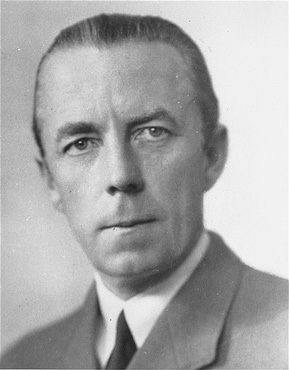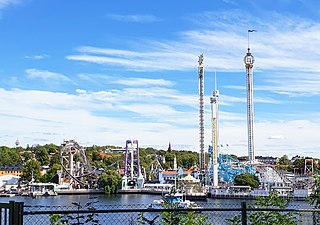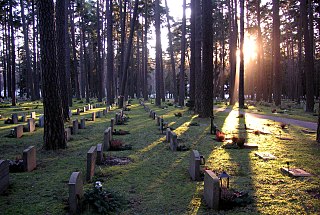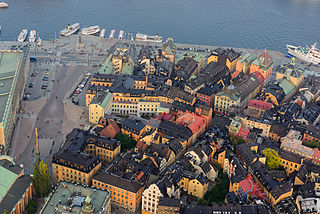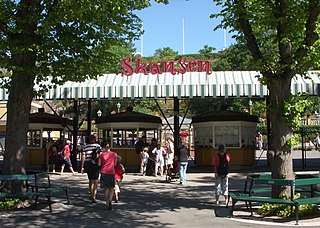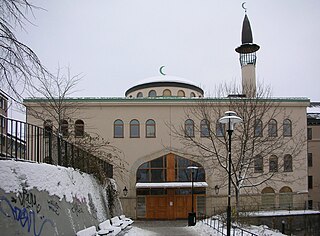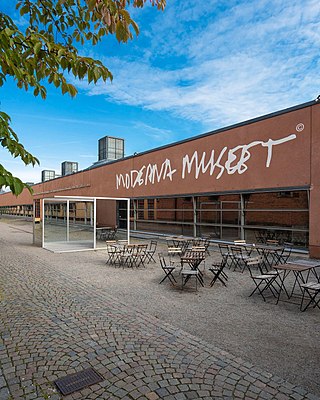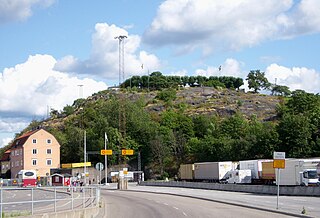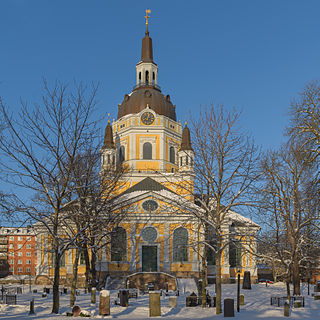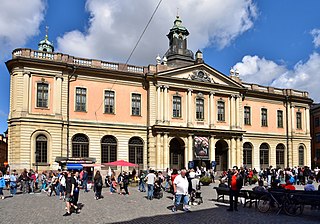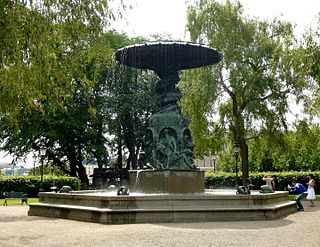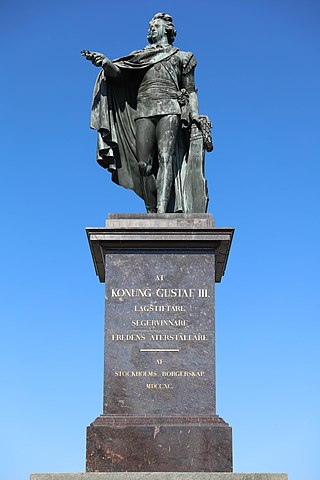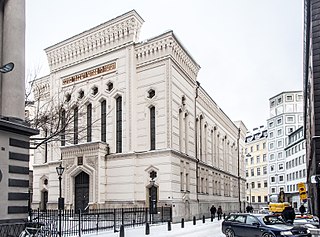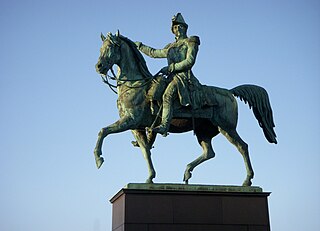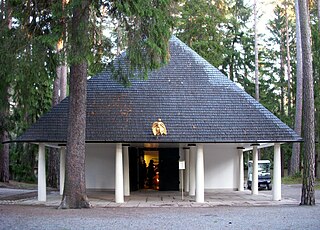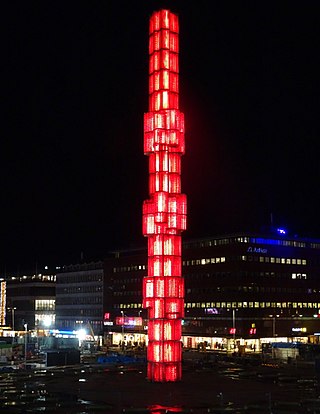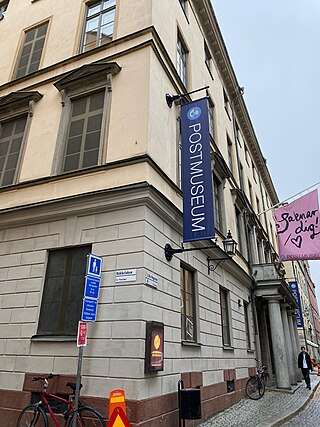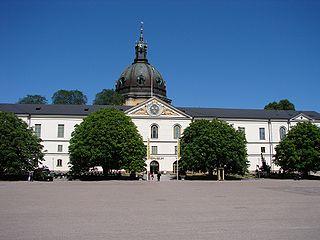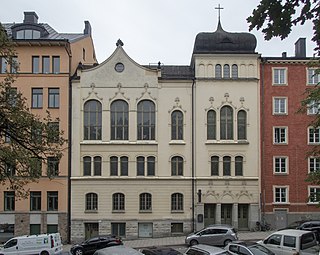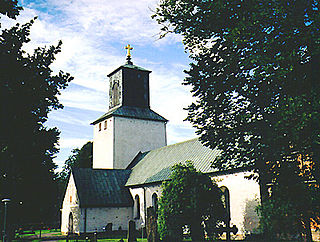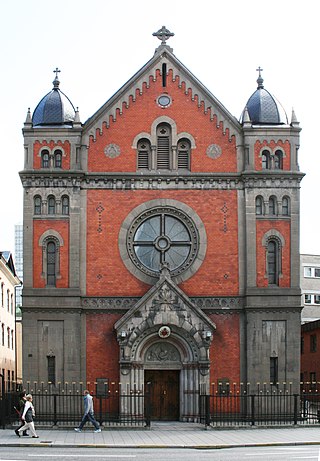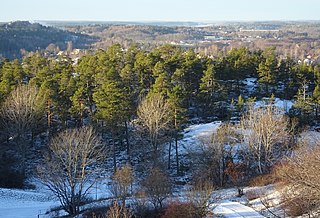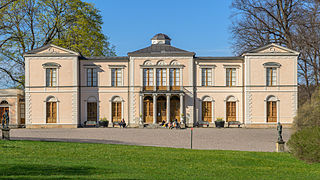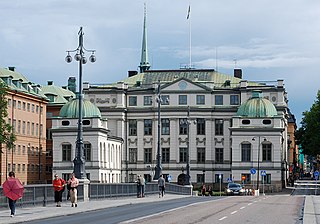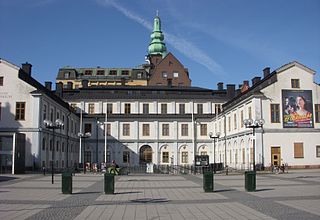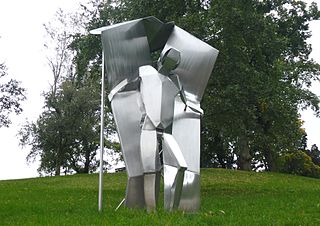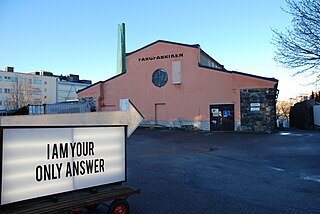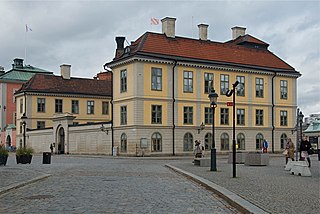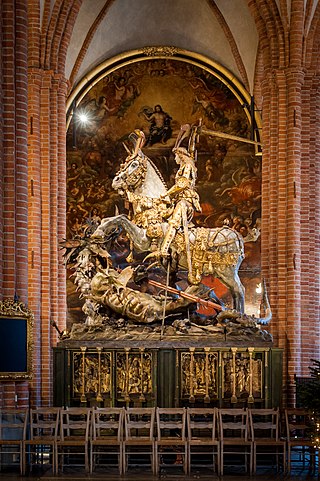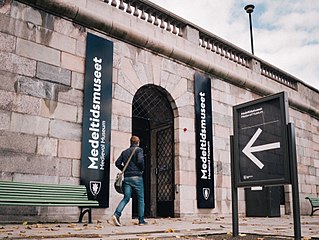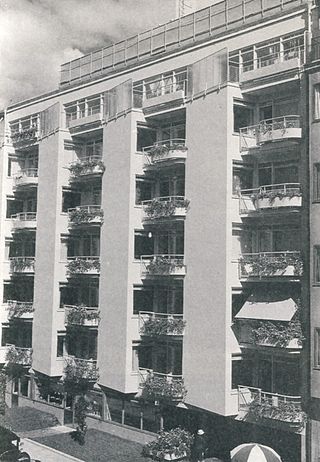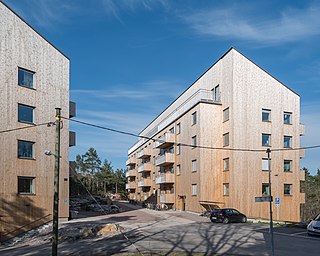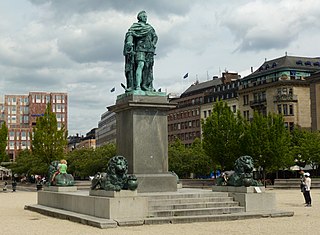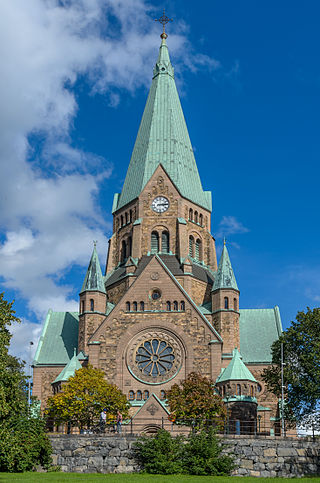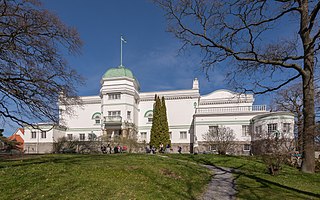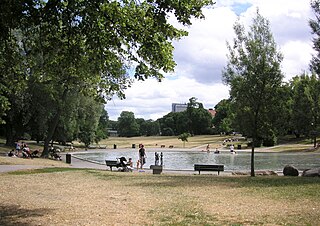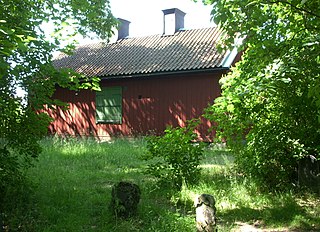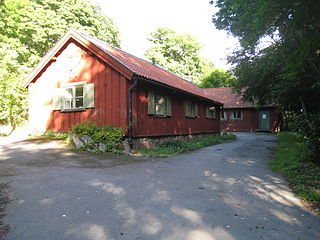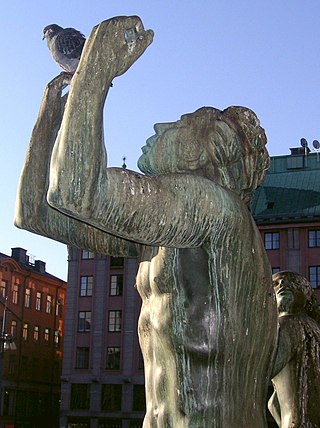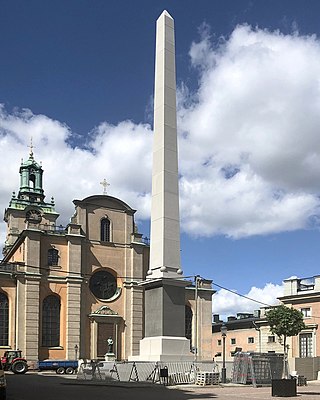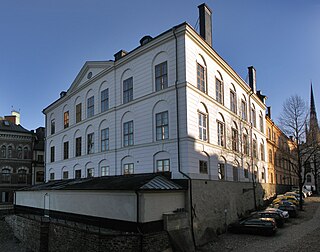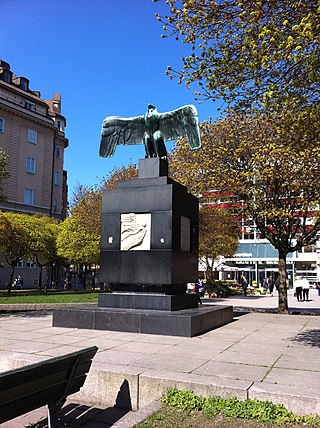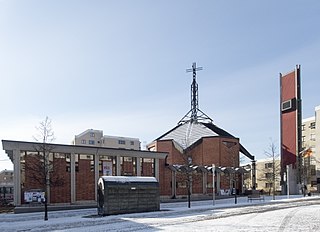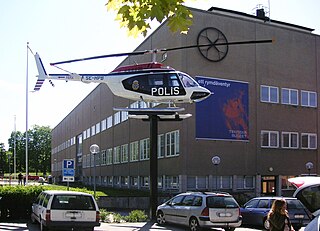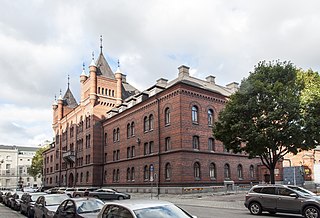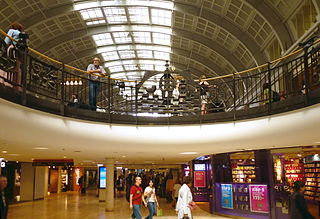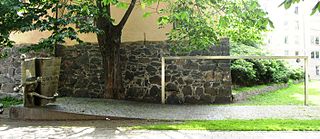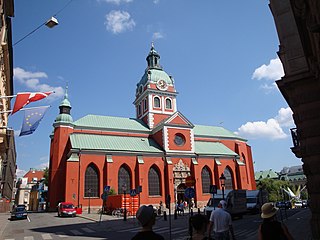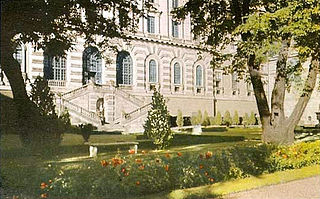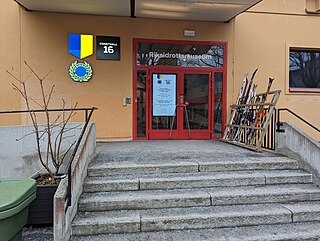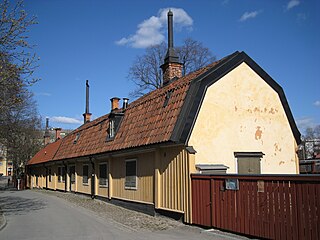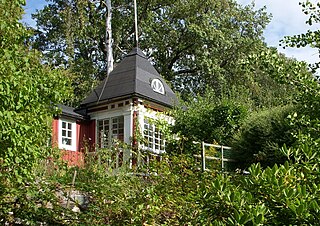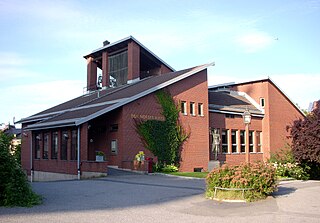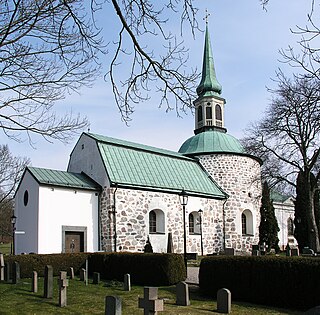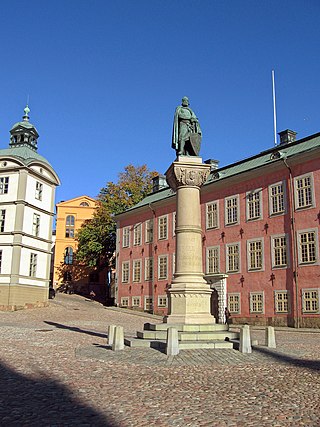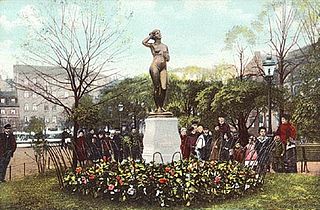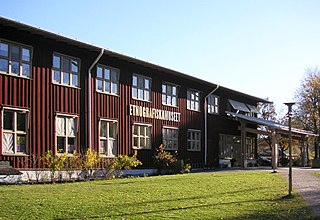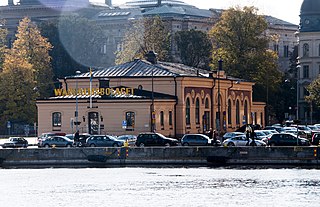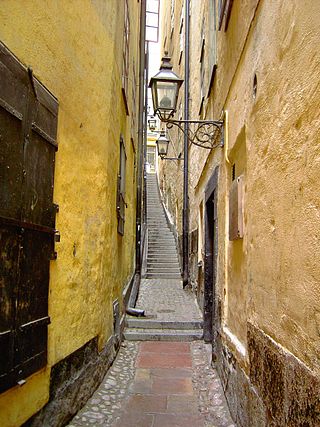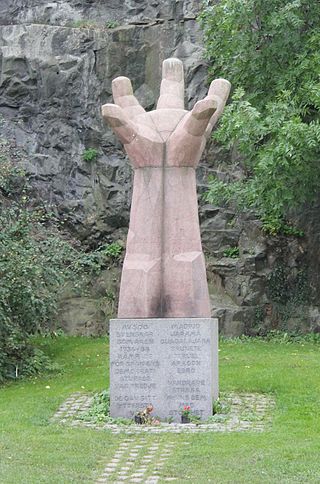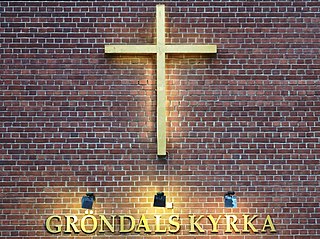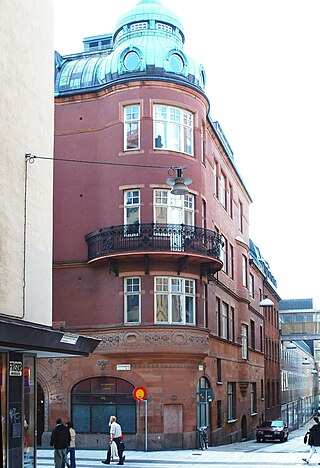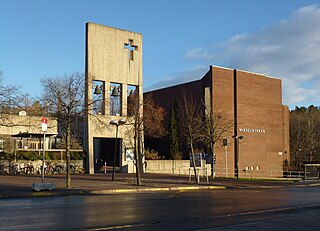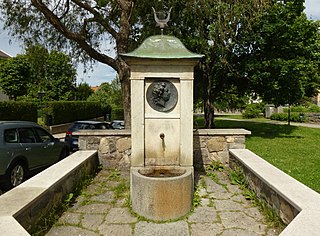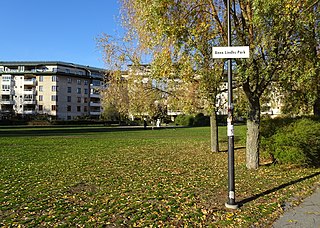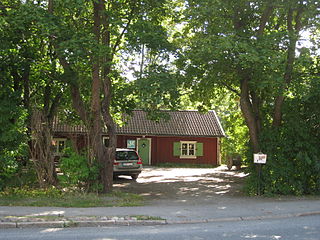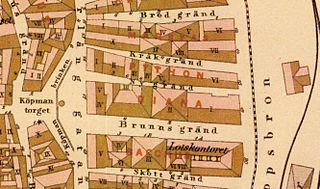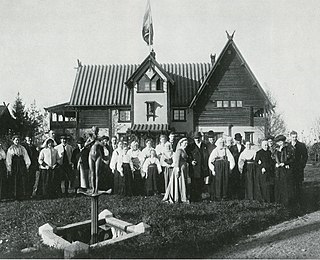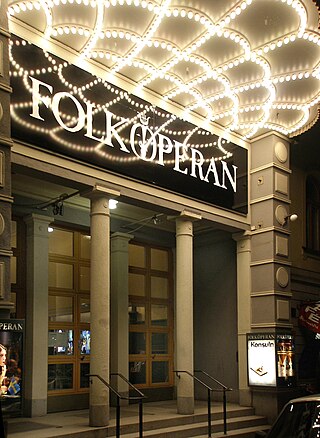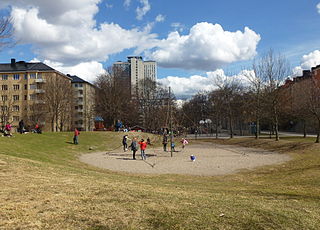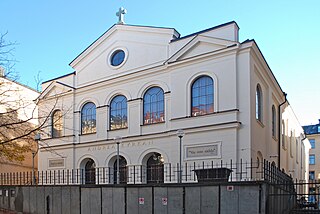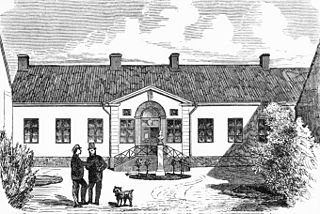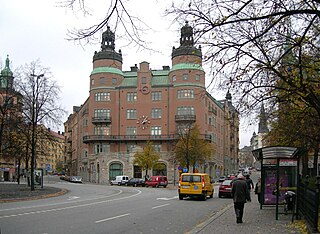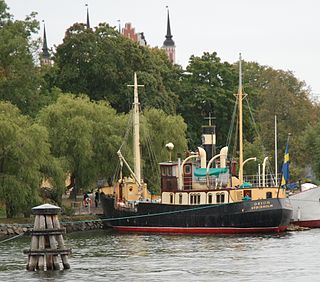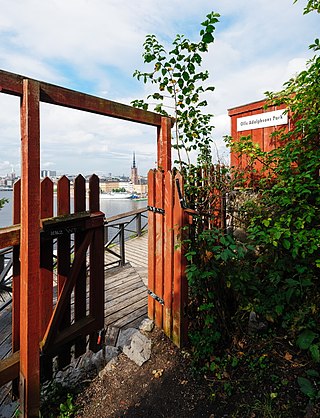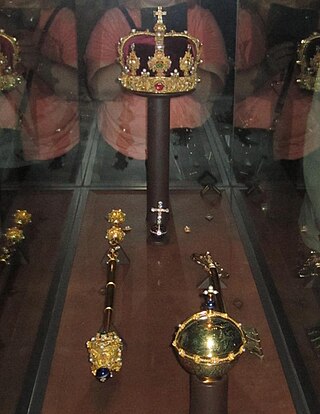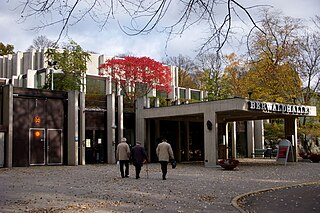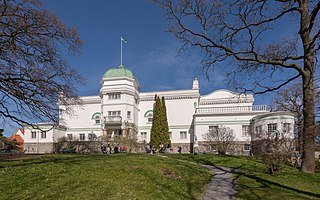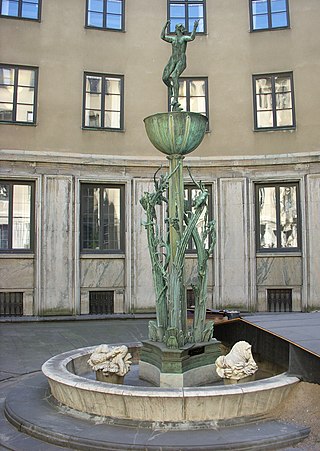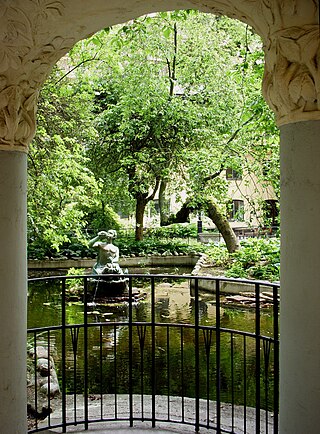100 Sights in Stockholm Municipality, Sweden (with Map and Images)
Legend
Premium Sights
Book tickets, guided tours and activities in Stockholm Municipality.
Guided Free Walking Tours
Book free guided walking tours in Stockholm Municipality.
Welcome to your journey through the most beautiful sights in Stockholm Municipality, Sweden! Whether you want to discover the city's historical treasures or experience its modern highlights, you'll find everything your heart desires here. Be inspired by our selection and plan your unforgettable adventure in Stockholm Municipality. Dive into the diversity of this fascinating city and discover everything it has to offer.
Sightseeing Tours in Stockholm Municipality1. Folke Bernadotte af Wisborg
Folke Bernadotte, Count of Wisborg was a Swedish nobleman and diplomat. In World War II, he negotiated the release of about 450 Danish Jews and 30,550 non-Jewish prisoners of many nations from the Nazi German Theresienstadt concentration camp. They were released on 14 April 1945. In 1945 he received a German surrender offer from Heinrich Himmler, though the offer was ultimately rejected by the allies.
2. Gröna Lund
Gröna Lund, or colloquially Grönan, is an amusement park in Stockholm, Sweden. Located on the seaward side of Djurgården Island, it is relatively small compared to other amusement parks, mainly because of its central location, which limits expansion. The 3.8 ha amusement park has over 30 attractions and is a popular venue for concerts in the summer. It was founded in 1883 by James Schultheiss.
3. Skogskyrkogården
Skogskyrkogården is a cemetery located in the Gamla Enskede district south of central Stockholm, Sweden. It was inaugurated in 1920 and was inscribed on the UNESCO World Heritage List in 1994. Its design, by Gunnar Asplund and Sigurd Lewerentz, reflects the development of architecture from Nordic Classicism to mature functionalism.
4. Gamla stan
Gamla stan, until 1980 officially Staden mellan broarna, is the old town of Stockholm, Sweden. Gamla stan consists primarily of the island Stadsholmen. Officially, but not colloquially, Gamla stan includes the surrounding islets Riddarholmen, Helgeandsholmen and Strömsborg. It has a population of approximately 3,000.
5. Skansen
Skansen is the oldest open-air museum and zoo in Sweden located on the island Djurgården in Stockholm, Sweden. It was opened on 11 October 1891 by Artur Hazelius (1833–1901) to show the way of life in the different parts of Sweden before the industrial era.
6. Stockholm Mosque
Zayed bin Sultan Al Nahyan's Mosque, commonly known as the Stockholm Mosque or the Stockholm Grand Mosque, is the largest mosque in Stockholm, Sweden. It is located at Kapellgränd 10, adjacent to the small park Björns trädgård, in the Södermalm district of Stockholm. Inaugurated in 2000, the mosque is administered by the Islamic Association in Stockholm.
7. Modern Art Museum
Moderna Museet, Stockholm, Sweden, is a state museum for modern and contemporary art located on the island of Skeppsholmen in central Stockholm, opened in 1958. In 2009 the museum opened Moderna Museet Malmö in Malmö.
8. Fåfängan
Fåfängan is a viewpoint with a restaurant and café located on the mountain near Danviken as far east as you can get on Södermalm in Stockholm. With its tree frame of chastened linden trees, which can be seen from afar, it is a characteristic feature of Stockholm's urban landscape. When the restaurant is open, the four flags are hoisted at the top of the mountain.
9. Tensta konsthall
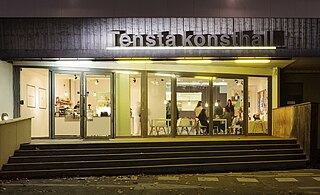
Tensta konsthall is a center for contemporary art in the Stockholm suburb of Tensta, northwest of the city center. The gallery works with artists from both Sweden and abroad, often in conjunction with local associations and organizations in the area. Artists who have exhibited in the gallery include Tris Vonna-Michell, Iman Issa, Shirin Neshat, International Festival, Marie-Louise Ekman, Diana Thater, and Oda Projesi.
10. Katarina kyrka
Katarina kyrka is one of the major churches in central Stockholm, Sweden. The original building was constructed 1656–1695. It has been rebuilt twice after being destroyed by fires, the second time during the 1990s. The Katarina-Sofia borough is named after Katarina Parish and the neighbouring parish of Sofia.
11. Nobel Museum
The Nobel Prize Museum is located in the former Stock Exchange Building (Börshuset) on the north side of the square Stortorget in Gamla Stan, the old town in central Stockholm, Sweden. The Nobel Prize Museum showcases information about the Nobel Prize and Nobel laureates, as well as information about the founder of the prize, Alfred Nobel (1833–1896). The museum's permanent display includes many artifacts donated by Nobel Laureates, presented together with personal life stories.
12. Molins fontän
Molin's Fountain is a bronze fountain sculpture that stands in Kungsträdgården in Stockholm. The fountain was designed by Johan Peter Molin (1814–1873) and was unveiled on 25 September 1873 after Molin's death.
13. Gustav III
Gustav III's statue is a sculpture depicting Sweden's King Gustav III. It was created by Johan Tobias Sergel, and its quay and postament were designed and erected by the master builder Jonas Lidströmer. It stands on Skeppsbrokajen below Slottsbacken in Stockholm and was unveiled on 24 January 1808.
14. The Great Synagogue
The Great Synagogue of Stockholm is a Conservative Jewish congregation and synagogue, located at 3A Wahrendorffsgatan, close to the park Kungsträdgården on Norrmalm, in Stockholm, Sweden. The synagogue was designed by Fredrik Wilhelm Scholander in the Moorish Revival style and completed in 1870.
Wikipedia: Great Synagogue of Stockholm (EN), Website, Heritage Website
15. Maritime Museum
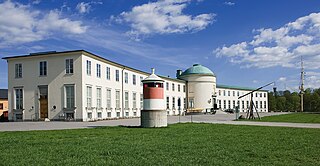
The Maritime Museum in Stockholm, Sweden is a museum for naval history, merchant shipping and shipbuilding. Located in the Gärdet section of the inner-city district Östermalm, the museum offers a panoramic view of the bay Djurgårdsbrunnsviken. The building was designed by architect Ragnar Östberg and built in 1933–36.
16. Karl XIV Johan
Karl XIV Johan's statue is an equestrian statue of Karl XIV Johan, King of Sweden and Norway from 1818 to 1844. The King is depicted with a field marshal's staff in his hand, and the statue symbolises his entry into Stockholm as the newly elected Crown Prince in 1810. The statue was originally inaugurated in 1854 and has been placed since 2018 on Slottsbacken, outside the south arch of the Royal Palace of Stockholm.
17. The Woodland Chapel
The Forest Chapel was designed by Gunnar Asplund and was built in 1919-1920 as the first chapel at the Woodland Cemetery in Stockholm. The Woodland Cemetery was inaugurated in 1920 and is today one of Sweden's World Heritage Sites.
18. Kristallvertikalaccent
Crystal vertical accent, officially "Crystal, vertical accent in glass and steel", is Edvin Öhrström's 37.5-metre-high glass pillar at Sergels torg in Stockholm. It is also called "The Cube", "The Stick" or "The Glass Obelisk".
19. Post Museum
The Postal Museum is located in the Penelope block at Lilla Nygatan 6 in the Old Town, Stockholm. The museum depicts the history of the post office from its foundation in 1636 to the present day. In addition to the historical collection, which consists mainly of postal historical objects as well as photos and documents, the Postal Museum has an extensive stamp collection and other philatelic objects.
20. Royal Armoury
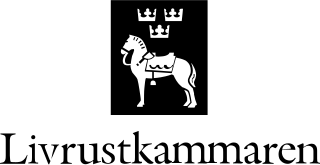
The Royal Armoury is a museum in the Royal Palace in Stockholm, Sweden. It contains many artifacts of Swedish military history and Swedish royalty. It is the oldest museum in Sweden, established in 1628 by King Gustavus Adolphus when he decided that his clothes from his campaign in Poland should be preserved for posterity.
21. Gustav III's Museum of Antiquities
Gustav III's Museum of Antiquities is Sweden's oldest public art museum, and one of the oldest in Europe. It was opened in 1794 in one of the castle wings of the Royal Palace of Stockholm, as a public tribute to the protection Gustav III had given to all branches of the liberal arts. It contains ancient sculptures that he bought during his trip to Italy in 1783–1784. It was reopened in 1958.
22. Swedish Army Museum
The Swedish Army Museum is a museum of military history located in the district of Östermalm in Stockholm. It reopened in 2002 after a long period of closure, and was awarded the title of the best museum of Stockholm in 2005. Its displays illustrate the military history of Sweden, including its modern policy of neutrality, and of the Swedish Army.
23. Katarina Elevator
The Katarina Elevator or Katarina Lift is a passenger elevator in Stockholm that connects Slussen to the heights of Södermalm. The lift was a shortcut between Katarinavägen, Slussen and Mosebacke torg. The original lift was constructed in 1881, but the current structure dates from the rebuilding of the Slussen transport interchange in 1936. The lift was closed for a lengthy renovation in 2010 and reopened in October 2023.
24. Kungsholms baptistkyrka
Kungsholm Baptist Church is the church building for Kungsholm's Baptist congregation. The church is located at Bergsgatan 59, south of Kronobergsparken, on Kungsholmen in central Stockholm. The parish belongs to the Uniting Church.
25. Spånga kyrka
Spånga Church is a church in the Spånga-Tensta borough in Stockholm, Sweden. It is part of Spånga-Kista Parish in the Diocese of Stockholm. The oldest part of the church originates from 1175–1200. Large reconstructions and enhancements took place during the 14th and 15th centuries.
26. Saint Eric's Cathedral
Saint Eric's Cathedral is a Catholic cathedral in Stockholm, Sweden. It is located on Södermalm, the southern part of central Stockholm. It was built in 1892 and was raised to the status of a cathedral in 1953, when the Catholic Diocese of Stockholm was created. The substantial increase in the number of Catholics in Stockholm and Sweden, mostly as a result of immigration after World War II, made the old church insufficient, and an extension, designed by architects Hans Westman and Ylva Lenormand, was inaugurated in 1983, at the 200th anniversary of the re-establishment in 1783 of the Catholic Church in Lutheran Sweden. The block where the cathedral is located also contains other functions serving the Catholic Church in Sweden.
27. The Chapel of Resurrection
The Resurrection Chapel is a building in the southern part of the Woodland Cemetery in Gamla Enskede in Stockholm Municipality. The chapel was designed by architect Sigurd Lewerentz and was consecrated on December 26, 1925. Since 1994, the Woodland Cemetery has been a UNESCO World Heritage Site.
28. Hedvig Eleonora kyrka
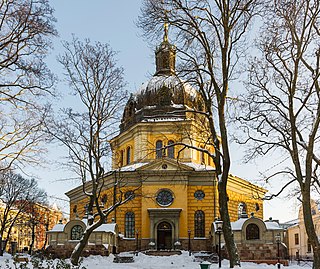
Hedvig Eleonora Church is a church in central Stockholm, Sweden. It is located at Östermalm and belongs to the Church of Sweden and is parish church for Hedvig Eleonora Parish in the Diocese of Stockholm.
29. Culture Centre
House of Culture is a cultural center situated to the south of Sergels torg in central Stockholm, Sweden. The House of Culture has been described as a symbol for Stockholm as well as of the growth of modernism in Sweden.
30. Vikingaberget
Vikingaberget is Stockholm Municipality's highest natural point, 77.24 meters above sea level, in Vårberg on the border between Stockholm Municipality and Huddinge Municipality. Vikingaberget is sometimes confused with the artificial "mountain" Vårbergstoppen, also called "tippen" or with Korpberget, which is at 73 m a.s.l.
31. Rosendal Palace
Rosendal Palace is a Swedish palace pavilion located on Djurgården, an island in central Stockholm. It was built between 1823 and 1827 for King Charles XIV John, the first Bernadotte king of Sweden. It was intended as an escape from the formalities of court life at the Royal Palace.
32. Bonde Palace
The Bonde Palace is a palace in Gamla stan, the old town in central Stockholm, Sweden. Located between the House of Knights (Riddarhuset) and the Chancellery House (Kanslihuset), it is, arguably, the most prominent monument of the era of the Swedish Empire (1611–1718), originally designed by Nicodemus Tessin the Elder and Jean De la Vallée in 1662-1667 as the private residence of the Lord High Treasurer Gustaf Bonde (1620–1667) it still bears his name, while it accommodated the Stockholm Court House from the 18th century and since 1949 houses the Swedish Supreme Court. On the south side of the building is the street Myntgatan and the square Riddarhustorget, while the alleys Riddarhusgränd and Rådhusgränd are passing on its western and eastern sides.
33. Södra stadshuset
Södra Stadshuset is a building at Ryssgården in the Södermalm district of Stockholm, which was built in the 1660s according to drawings by Nicodemus Tessin the Elder and since 1937 has housed the Stockholm City Museum.
34. Ljunglöfska slottet
Ljunglöfska Castle and Ljunglöfska Park is a larger villa with an associated park in Blackeberg in Bromma in Stockholm Municipality. Ljunglöfska Castle is located at Ljunglöfsvägen 1 next to Lake Mälaren.
35. Kronobergsparken
Kronobergsparken is a park on Kungsholmen in central Stockholm. It is located between Polhemsgatan, Bergsgatan, Kruunuvuorenkatu and Parkgatan. The park is one of Stockholm's mountain parks that was established according to Albert Lindhagen's master plan from 1866. There were two alternatives to the design of the park, one with a round shape and one with an oval basic shape.
36. Colour Factory
Färgfabriken is an art gallery for contemporary art, architecture, social issues and urban development. The art gallery is located on Lövholmen, a former industrial area in Liljeholmen, Stockholm Municipality. Until the 1970s, the premises housed the paint manufacturer Beckers, hence the name Färgfabriken.
37. Hessensteinska palatset
The Hessenstein Palace or Bengt Oxenstierna's Palace is a palace located at Birger Jarls torg 2 on Riddarholmen in Stockholm. The palace was built in the 1630s on behalf of the privy councillor Bengt Bengtsson Oxenstierna. Around the year 1680, the palace was rebuilt.
38. Sankt Göran och draken
Saint George and the Dragon is a late medieval wooden sculpture depicting the legend of Saint George and the Dragon, located in Storkyrkan in Stockholm, Sweden. It is attributed to Bernt Notke and was commissioned by the Swedish regent Sten Sture the Elder. It was inaugurated in 1489. It has been described as an artistic high point in the artistic production of Bernt Notke.
39. Museum of Medieval Stockholm
The Museum of Medieval Stockholm, centrally located north of the Royal Palace, was constructed around old monuments excavated in an extensive archaeological dig in the late 1970s. Part of Stockholm's city wall, dating from the early 16th century, was also found. In order to make the finds accessible to the general public, a planned subterranean garage had to give way to the Museum of Medieval Stockholm, which was inaugurated in 1986. Museum director Margareta Hallerdt created a visionary state-of-the-art museum, designed by artist Kerstin Rydh, that received both national and international acclaim and won the European Museum of the Year Award in 1986.
40. Kollektivhuset
The collective house is called an apartment building in the Fågelbärsträdet block at John Ericssonsgatan 6 on Kungsholmen in Stockholm, built in 1935 according to drawings by Sven Markelius, in collaboration with Alva Myrdal. The main idea of the collective house idea was that there should be trained staff to take care of the children and staff should also be on site at night, when the parents were away. A large central kitchen would save space in the apartment and make cooking easier for the residents. The property Fågelbärsträdet 13 has been a legally protected listed building since 1992.
41. Väskberget i Hammarbyhöjden
The Taklampan block is a block at Finn Malmgrens väg 87 and 89 and 116 and 118 in Björkhagen in Stockholm Municipality. The block is surrounded by Finn Malmgrens väg to the west, Nackareservatet to the east, Karlsborgsvägen to the south and Hammarbybacken to the northwest. The block consists of the property Taklampan 1 and is one of ten new construction projects in the City of Stockholm that were nominated for Stockholm Building of the Year 2018.
42. Almhöjden
Almhöjden, or Meditation Grove, is a meditation site with umbrella elms within the Woodland Cemetery in Stockholm, located west of the Forest Crematorium. The hill with its surroundings, which Gunnar Asplund called "biblical landscape", was mainly designed by architect Sigurd Lewerentz and underlines the soft, classical character of the landscape. There are clear similarities here with a painting by Caspar David Friedrich from around 1824 and it is fairly certain that Friedrich's landscape painting influenced Asplund and Lewerentz. Since 1994, the Woodland Cemetery has been included on the UNESCO World Heritage List.
43. Karl XIII
Karl XIII's statue stands in Kungsträdgården in Stockholm. It was made by Erik Gustaf Göthe and erected on 5 November 1821 as a monument to King Karl XIII. It was commissioned by Karl XIV Johan, and at his expense. Karl XIV Johan was Karl XIII's adopted child and it was precisely on the anniversary of the adoption that the statue was unveiled. The statue is managed by the National Property Board of Sweden.
44. Sofia kyrka
Sofia Church, named after the Swedish queen Sophia of Nassau, is one of the major churches in Stockholm, Sweden. It was designed during an architectural contest in 1899 and was inaugurated in 1906. It is located in the eastern part of the island of Södermalm, standing on the north east peak of the Vita Bergen park. Sofia church belongs to Sofia parish of the Church of Sweden.
45. Gustav II Adolf
Gustav II Adolf's statue in Stockholm is an equestrian statue created by Pierre Hubert L'Archevêque and Johan Tobias Sergel, which stands on Gustav Adolf's square in Stockholm. The statue was inaugurated on 17 November 1796, the plinth sculptures were put in place in 1906.
46. Thielska galleriet
The Thiel Gallery is an art museum in the Djurgården park area of Stockholm, Sweden. Represented are the members of the Artists Association (Konstnärsförbundet) from the early 1900s as well as one of the world's largest collections of works by Edvard Munch.
47. Fredhällsparken
Fredhällsparken is a park in the district of Fredhäll, on western Kungsholmen in central Stockholm. The main part of the park is located north of Fredhäll's buildings in line with Adlerbethsgatan, and below Drottningholmsvägen. The cliff slope in the south down towards Essingeundet is also included in the park as well as the green areas that exist between the houses in the Träslottet block. From Fredhällsparken, a walkway runs east under the Essingeleden towards Rålambshovsparken. The construction work for the park began in the early 1930s and it took over 30 years to complete.
48. Kolerakyrkogården
The Cholera Cemetery was a cholera cemetery near Skanstull in Stockholm that was used from 1809 to 1901. Many victims of Stockholm's two cholera epidemics in 1834 and 1853 were buried here – hence the name. The Cholera Cemetery is now one of Stockholm's parks along Olaus Magnus väg and the street Hammarbybacken, located east of Gullmarsplan in Johanneshov.
49. Karsviks Östergård
Karsvik or Karsvik's village is the name of a farm that in the 1500s was located in Norra Ängby in Bromma, Västerort. The farm was then located on the northern shore of the now lost Ängbysjön. The village of Karsvik was located in the eastern part of the current park, Karsvik's pasture. Östergården's manor house still exists. Nowadays, the farm and the later built side building are used by the Mälarscouts, who hold their scout meetings in Karsvik's pasture, which was newly renovated in 1995.
50. Orpheusgruppen
The Orpheus Group is a fountain sculpture made in 1926-1936 by Carl Milles and cast at Herman Bergman Art Foundry. It stands in front of the Concert Hall on Hötorget in Stockholm. Orpheus is the one who has been allowed to represent the art of music and the lyre in Greek mythology.
51. Obelisken
The Obelisk at Slottsbacken is an obelisk monument adjacent to the Royal Palace on Slottsbacken in Old Town, Stockholm, Sweden and is considered to be the very centre point of the Swedish capital city. Unveiled in 1800, it commemorates the deeds of Stockholm's citizenry during the Russo-Swedish War. In 2017, the original obelisk was dismantled due to age- and weather-related damage and was rebuilt, using newly quarried stone, in spring 2020.
52. Skinnarviksberget
Skinnarviksberget is a mountain section on Södermalm in Stockholm and part of Skinnarviksparken. With its 53 meters above sea level, the mountain is the highest natural point inside the tolls and offers a grandiose view of Riddarfjärden and Kungsholmen.
53. Schering Rosenhanes palats
Schering Rosenhane's Palace is a palace building at Birger Jarls torg 10, Riddarholmen, Stockholm, built in 1652–1656 for the Governor-General Schering Rosenhane according to drawings by Nicodemus Tessin the Elder. From 1776 to 1876, the palace was the main house of the Swedish Masonic Order. The wings, which were built during this time, the eastern one around 1800 and the western one around 1850, changed the palace's façade towards the land side and the walled garden. The façade facing the waterfront, Riddarfjärden, has retained most of its original beauty.
Wikipedia: Schering Rosenhanes palats (SV), Heritage Website
54. Flygarmonumentet
The Aviator Monument is a statue that stands at Karlaplan in central Stockholm, Sweden. The statue was a gift from the Swedish Aeronautical Society in memory of different Swedish aviation pioneers who fell in both the North Pole expedition of 1898 and in the Swedish aviator era in 1917. The task to build the monument was given to the famous sculptor Carl Milles. The Aviator Monument was finished in 1931.
55. Kista kyrka
Kista church belongs to Spånga-Kista parish and is located in Kista, in Västerort within Stockholm municipality. The octagonal church, is located in the city center close to the metro and Kista Galleria.
56. Swedish National Museum of Science and Technology
The National Museum of Science and Technology is a museum in Stockholm. It is Sweden’s largest museum of technology, and has a national charter to be responsible for preserving the Swedish cultural heritage related to technological and industrial history. Its galleries comprise around 10,000 square meters, and the museum attracts annually about 350,000 visitors. The collections consist of more than 55,000 objects and artifacts, 1 200 shelf metres of archival records and documents, 200,000 drawings, 800,000 images and about 40,000 books. The National Museum of Science and Technology also documents technologies, processes, stories and memoirs in order to preserve them for generations to come.
Wikipedia: National Museum of Science and Technology (Sweden) (EN), Website
57. Seglora Church

Seglora Church is a wooden church building located at Skansen in Stockholm. It was erected in 1729 in Seglora in Västergötland, but was moved to Skansen in 1918, after a new parish church in stone made the older church superfluous.
58. Royal Stables
The Royal Stables is called H.M. The King's Royal Stables, located in the Kusen block at Väpnargatan 1 and Riddargatan 22, next to the Royal Dramatic Theatre in Östermalm in Stockholm. The building was inaugurated in 1894 by King Oscar II. The Royal Stables are a national listed building.
59. The Ring
The ring at Stockholm Central Station, is the round opening in the floor of Stockholm Central Station's central hall to the underlying connecting corridor to the metro station T-centralen. The ring was inaugurated in 1959 and its railing is a wrought iron work of art created by sculptor Stig Blomberg.
60. Åsöberget
Åsöberget is a mountain and an area located in the Södermalm district of Stockholm. Here, together with Djurgårdsstaden, there is the most extensive and coherent wooden building in Stockholm. Since 1956, the area has been a cultural reserve owned and managed by AB Stadsholmen. The buildings are blue marked by the City Museum in Stockholm, which means "that the buildings are considered to have particularly high cultural-historical values".
61. Vi ses vid målet
See you at the goal is a sculpture in memory of football legend Lennart "Nacka" Skoglund and is located in Nacka's Corner at the intersection of Brännerigatan – Katarina Bangata on Södermalm in Stockholm's inner city.
62. Jakobs kyrka
Saint James's Church is a church in central Stockholm, Sweden, dedicated to apostle Saint James the Greater, patron saint of travellers. It is often mistakenly called St Jacob's. The confusion arises because Swedish, like many other languages, uses the same name for both James and Jacob.
Wikipedia: Saint James's Church, Stockholm (EN), Heritage Website
63. Logården
Logården is a garden at the Royal Palace of Stockholm, located facing Skeppsbron and Saltsjön between the castle's south-east and north-eastern wings. One explanation for the name may be that wild animals were kept in the yard, wolves, lynxes, foxes and even lions. The old castle Tre Kronor also had a similar "farm" but there it was called Lejongården or Leopardgården. According to another interpretation, the name derives from the "lodgården" that was located outside the northeastern part of the Tre Kronor Castle. On the ground floor inside, the artillery had its stores and workshops. The cannonballs, which were called "plumbing", were stored in the plumb yard. Later, the name was corrupted to "Logården".
64. National Sports Museum of Sweden
The Swedish Sports Museum is a museum located in the Museum Park at Djurgårdsbrunnsvägen 26 in Gärdet in Stockholm. The National Sports Museum was opened in its current premises on 16 June 2007. From 2007 to 2020, the museum was called the National Sports Museum.
65. Sverigeväggen
The Sweden Wall is a wall relief made by the artist Siri Derkert in the years 1967-1969. The work occupies part of the façade of the Sweden House facing Kungsträdgården in Stockholm and was unveiled in June 1969 with a two-week delay due to a protest action by Derkert.
66. Ekermanska malmgården
Ekermanska malmgården is an estate located in Södermalm in Stockholm. Malmgården is located in the Ekermanska gården block between the Ring Road, Ekermans gränd and the Southern Main Line. Today, Malmgården is the homestead for Högalid's homestead association. The building is classified blue by the City Museum in Stockholm, which means that the buildings have "extremely high cultural-historical values" corresponding to the requirements for listed buildings.
67. Eriksdalslunden
Eriksdalslunden is a park and allotment garden area in Södermalm in central Stockholm. The park is located between Eriksdalsbadet and the Ring Road and the allotment area stretches all the way down and west along Årstaviken from Eriksdalsbadet in the east to Södra Årstalunden's allotment area in the west. In Eriksdalslunden's allotment area there is also a kiosk from the Stockholm Exhibition in 1897.
68. Kronprinsesse Märthas kirke
Crown Princess Märtha's Church is a church building in the Stammen block on Stigbergsgatan in Södermalm in Stockholm. It is run by Sjømannskirken, the Church of Norway's foreign ministry, and is named after Crown Princess Märtha of Norway. The entrance is from Stigbergsgatan 24, but the building is also visible far above Renstiernas gata, which is below. The building has been blue-marked by the City Museum in Stockholm, which means "that the buildings are considered to have particularly high cultural-historical values".
69. Bromma kyrka
Bromma Church is a round church in the borough Bromma in Stockholm, Sweden. It is the parish church of Bromma Parish in the Diocese of Stockholm. The oldest parts of the church were built in the late 12th century as a fortress church, and the church is among Stockholm's oldest buildings.
70. Birger Jarl
Birger jarl's statue is a statue depicting Sweden's earl and regent Birger jarl. The statue stands on Birger jarl's square on Riddarholmen in Stockholm. The statue was created by sculptor Bengt Erland Fogelberg and unveiled on October 21, 1854.
71. Snöklockan
Snowdrop is a standing female nude in plaster, sculpted by Per Hasselberg in 1881. It is named after the snowdrop flower at the woman's feet, although the title also refers to its young, innocent subject stepping out of childhood and into womanhood - Hasselberg used a sixteen-year-old Italian girl as a model for the work
72. Museum of Ethnography
The Museum of Ethnography, in Stockholm, Sweden, is a Swedish science museum. It houses a collection of about 220,000 items relating to the ethnography, or cultural anthropology, of peoples from around the world, including from China, Korea, South and Southeast Asia, the Pacific region, the Americas and Africa. The museum is situated in Museiparken at Gärdet in Stockholm. Since 1999, it is a part of Swedish National Museums of World Culture and is also hosting the Sven Hedin Foundation. The museum is open Tuesday to Sunday 11:00AM – 5:00 PM, and Wednesdays 11:00 AM – 8:00 PM and is closed on Mondays.
73. Old Customs House
The Customs House on Blasieholmen is a customs building on Nybrokajen / Hovslagargatan on Blasieholmen in central Stockholm, built in 1874. Customs operations ceased in the 1940s and today the building is used as an office. The Customs House building was green-labelled by the City Museum in Stockholm, which means that the cultural-historical value is considered to be particularly high from a historical, cultural-historical, environmental or artistic point of view.
74. Mårten Trotzigs Gränd
Mårten Trotzigs gränd is an alley in Gamla stan, the old town of Stockholm, Sweden. Leading from Västerlånggatan and Järntorget up to Prästgatan and Tyska Stallplan, the width of its 37 steps tapers down to a mere 90 centimetres (35 in), making the alley the narrowest street in Stockholm.
75. La Mano
La Mano is a memorial in Stockholm in memory of the Swedes who died during the Spanish Civil War, most of whom fought in the Thälmann Battalion. It stands next to Katarinavägen in Södermalm. The monument was created by Liss Eriksson and made by him together with Göran Lange and was completed in 1977. Göran Lange has also made the map of Spain in stone, which is on the ground next to the statue. On it are the most important strokes engraved, and they are mentioned in the quote on the plinth:
76. Gröndals kyrka
Gröndal's Church is a church within the parish of Hägersten in the Diocese of Stockholm. The building is built in reddish-brown brick and is located in the middle of Gröndal with the address Gröndalsvägen 61, corner of Lövholmsvägen. The building was green-labelled by the Stockholm City Museum, which means "that the buildings have a high cultural-historical value and are particularly valuable from a historical, cultural-historical, environmental or artistic point of view".
77. Dance Museum
Dansmuseet is a museum for the performing and visual arts located in Stockholm, Sweden. Opened in 1953 in the basement of the Royal Swedish Opera, it originally displayed a large collection of dance-related art that belonged to Rolf de Maré, a leader of the Ballets suédois in Paris from 1920 to 1925. In 1969, a library named after the Swedish dancer, Carina Ari was endowed by Ari and attached to the museum, with Bengt Hägar as its curator. The library contains the most comprehensive archive of literature on dance in Northern Europe. The museum is currently located at Drottninggatan 17. The library receives no state funds, as it is privately endowed. The majority of its collection consists of materials from Western Europe dating between 1500 and 1850, a journal collection dating from the turn of the 20th century, and a video library of thousands of films. There is also a large collection of books on Russian dance. As of 2023, the director of the museum is Hans Öjmyr.
78. Mikaelikyrkan
Mikaeli Church Parish is a free church congregation with its center in Skärholmen, in the southwestern part of Stockholm Municipality. Mikaelikyrkan is a member of the Uniting Church. Mikaeli Church is the parish's own church.
79. Carl Michael Bellman's Well
Bellmanskällan is a fountain at the intersection of Pettersbergsvägen/Bellmanskällevägen in the district of Hägersten near the border with Mälarhöjden in Stockholm. The source has been mentioned in writing since 1803. However, local tradition holds that its existence dates back to the time of Carl Michael Bellman and that the source is identical to the one the poet writes about in Fredman's epistle N:o 82: "Vila vid denna källa" from 1790. The spring still produces water, albeit at a rather slow rate. The water is drinkable.
80. Anna Lindhs Park
Anna Lindh's Park, formerly Vintertullsparken, is a park in Norra Hammarbyhamnen on Södermalm in Stockholm. The park is surrounded by the Hamnvakten block, which was the first new residential block to be built in Hammarbyhamnen, to the south the park faces the quay and Hammarby lake.
81. Dragontorpet
Dragoon croft Abrahamsberg is a soldier's cottage, a low, red cottage, located in the district of Abrahamsberg in Bromma, west of Stockholm. Abrahamsbergstorpet, which is located on Gustav III's väg 5, is one of the last crofts left in Bromma. Of Bromma parish's 103 known crofts and cottages, there are today only 10 crofts left. Some of them have been rebuilt. Dragoon croft in Abrahamsberg is probably from the beginning of the 1700s.
82. Bacchus 6
The Bacchus block is a block in Stockholm's Old Town. The block is surrounded by Österlånggatan to the west, Brunnsgränd to the north, Skeppsbron to the east and Skottgränd to the south. The area for today's Bacchus block came into being after the 1640s when the Eastern City Wall was demolished and new buildable land was laid out on partially filled land along Skeppsbron. North of the block in today's Diana block was the medieval Fiskartorget.
83. Morgonbad
Morgonbad is a fountain sculpture by Anders Zorn. It was created in 1908-1909 and can be found in addition to Zorngården's garden, in Rosenbadsparken in Stockholm. Morning Bath was one of Zorn's last sculpture works.
84. Folkoperan
Folkoperan is an opera house in Stockholm, Sweden, at Hornsgatan 72 in the southern district of Södermalm. It is one of Stockholm's most successful opera houses in terms of audience attendance, and is considered Sweden's most important stage for freelance opera singers and musicians.
85. Rosenlundsparken
Rosenlundsparken is a park in Södermalm in Stockholm. The park, which is also known as "Skånegläntan", began construction in the 1930s and was not completed until the early 1970s. For the renovation that was carried out in 2007, the park section "The Beach" was awarded the Siena Prize in 2008.
86. Andreaskyrkan
Andreaskyrkan is a free church located in the Pelarbacken block at Högbergsgatan 31 on Södermalm in Stockholm. Andreaskyrkan belongs to the Uniting Church, a denomination with about 65,000 members in Sweden.
87. Sätra vattentorn
Sätra Water Tower is a water reservoir in Sätra in southern Stockholm. With its high location, the water tower in Sätra is a landmark throughout southwest Stockholm and can be seen all the way to Ekerö. The water tower is located within the Sätraskogen nature reserve. The building has been blue-marked by the City Museum in Stockholm, which means "that the buildings are considered to have particularly high cultural-historical values".
88. Minnesstenen Norges tack
The Memorial Stone Norway's Thanks is a memorial in the form of a large stone that is located on Djurgården in Stockholm. The memorial stone was presented on 14 June 1983 by Norway's King Olav V to Sweden's King Carl XVI Gustaf as an official thank you from Norway to Sweden for Sweden and the Swedish population helping Norway during World War II when it was occupied by Nazi Germany during the years 1940–1945. Part of the help was to equip and train a Norwegian army on Swedish soil during the years 1943 to 1945. The army was under the guise of police troops and included 15,000 soldiers.
89. The Glassworks Neighbourhood
Kungsholm[en]s glassworks was a glassworks located on eastern Kungsholmen in Stockholm, founded in 1676. During the 1700s, Kungsholm Glassworks was Sweden's leading glassworks with the manufacture of magnificent trophies and wine glasses, among other things. The mill was closed down in 1815. Today, the name of the block Glasbruket is reminiscent of the previous business.
90. Norra Bantorget
Norra Bantorget is an area in central Stockholm, named after the location where the first Stockholm North Station was built. It is the traditional Social Democratic grounds of the Swedish capital. It is the location of the LO headquarters, the Swedish Trade Union Confederation.
91. Söderhöjdskyrkan
Söderhöjdskyrkan, formerly Ebeneserkyrkan, is a free church connected to the Evangelical Free Church located on the corner of Brännkyrkagatan 31 and Blecktornsgränd in the Ormen mindre block on Södermalm in Stockholm. The building has been green-labelled by the Stockholm City Museum, which means "particularly valuable from a historical, cultural-historical, environmental or artistic point of view".
92. Stockholms Centrals gamla klocka
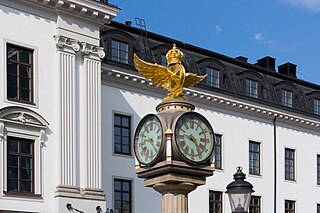
Stockholm Central Station's old clock is called the clock, which since October 2013 has stood on Centralplan outside Stockholm Central Station. The "old clock" – as the owner Jernhusen calls it – was purchased around 1910 by the Swedish State Railways, probably from F.W. Tornberg urfabrik & urhandel and has since been in at least six different places.
93. SS Orion
S/S Orion is a steam-powered ship moored on the western shore of the islet Skeppsholmen in central Stockholm, Sweden. It is a listed historic ship of Sweden. The vessel, which is the oldest of its kind still remaining in Sweden, now serves as a museum ship.
94. Olle Adolphsons park
Olle Adolphson's Park is a park in Södermalm, Stockholm. The previously unnamed park was named on March 10, 2014 after the troubadour Olle Adolphson, who lived nearby at Bastugatan 32 during the 1950s.
95. The Treasury
The Treasury is a museum in the basement vaults of the Hall of State at the Royal Palace of Stockholm, where Sweden's regalia and other valuable objects are displayed to the public. The treasury was opened in 1970 following a decision by the Riksdag and was designed after the palace architect Sven Ivar Lind. Before that, the regalia could only be seen at the formal opening of the Riksdag and other ceremonies. The treasury is accessed via an entrance in the south archway.
96. Berwaldhallen
The Berwald Hall is a concert hall situated in a park landscape at Dag Hammarskjölds väg 3 in the Östermalm district of Stockholm, Sweden. Construction on the building began in 1976 based on a design by architects Erik Ahnborg and Sune Lindström. The hall is shaped as a hexagon.
97. Piperska trädgården
Piperska Muren is an ore farm built on Kungsholmen in Stockholm during the 1600s and in 1694 purchased for 9,000 daler copper coins by the courtier Count Carl Piper. His wife Christina Piper had a high wall of Roslag sandstone built in 1702, which popularly came to be known as the Piper Wall. The property has been owned since 1807 by the Stockholm Lodge of the Order of Coldinu. The Svea Order and a number of other societies also have their offices here. In addition to the organisers' own gatherings, the premises are now used for conference and banquet hall activities.
98. Villa Eolskulle
Villa Eolskulle is a building at Sjötullsbacken 8 in Blockhusudden, southern Djurgården, Stockholm. The villa, which is better known as the Thiel Gallery, was built between 1904 and 1907 as a private residence for the financier and art collector Ernest Thiel and his family. Ferdinand Boberg was hired as architect. He created a Viennese Art Nouveau inspired building, which has housed the Thiel Gallery since 1924 and has been protected by law as a state listed building since 1993.
99. Dianafontänen I
The Diana Fountain, or Diana Fountain, is a bronze and marble sculpture by Carl Milles. The Diana Fountain is available in two designs, the Diana Fountain I was created in 1927–1928 and can be found in the courtyard of the Match Palace in Stockholm, the Diana Fountain II was created in 1929–1930 and can be found as a copy at Skytteholm, Ekerö municipality. On the square in Tomelilla there is a Diana fountain that was donated by Milles to the town when he learned that the town was going to name a street after him as a memory after the Tomelilla exhibition in 1927. In Tomelilla, the sculpture is called Artemis after Diana's Greek counterpart. "Diana" also exists as a solitary figure in bronze, fitted with a skirt.
100. Centralbadsparken
Centralbadsparken is one of Stockholm's smallest parks and is located inside the Islandet block on Norrmalm in Stockholm. The block is bounded by Drottninggatan, Adolf Fredriks Kyrkogata, Holländargatan and Olof Palmes gata.
Share
How likely are you to recommend us?
Disclaimer Please be aware of your surroundings and do not enter private property. We are not liable for any damages that occur during the tours.
